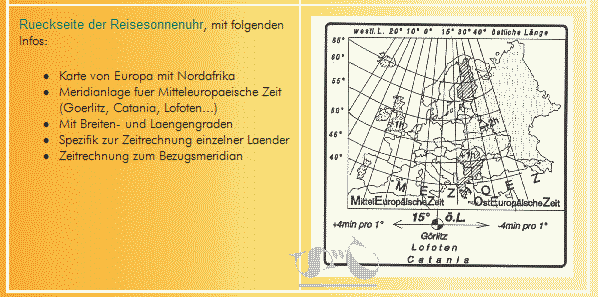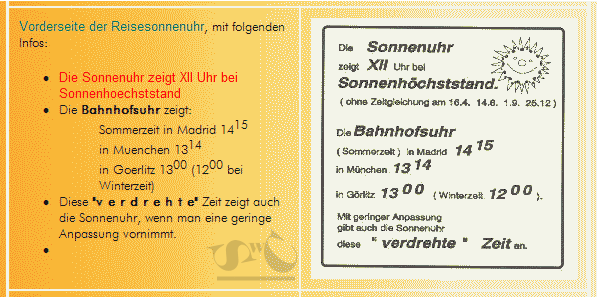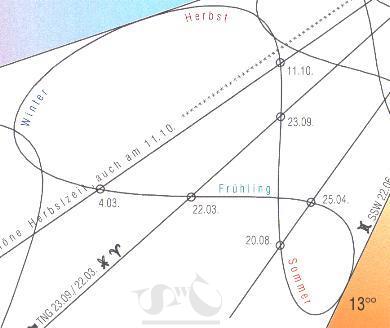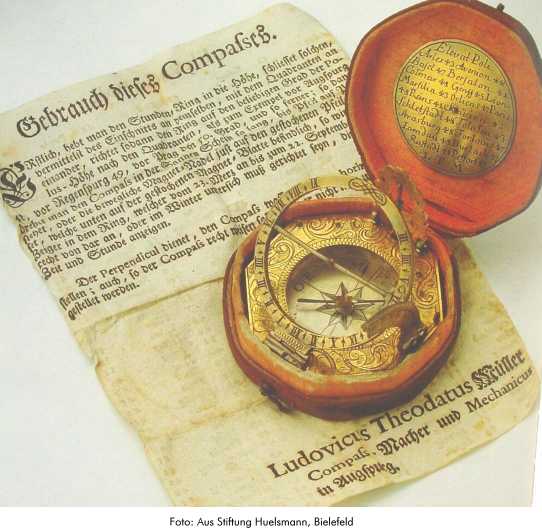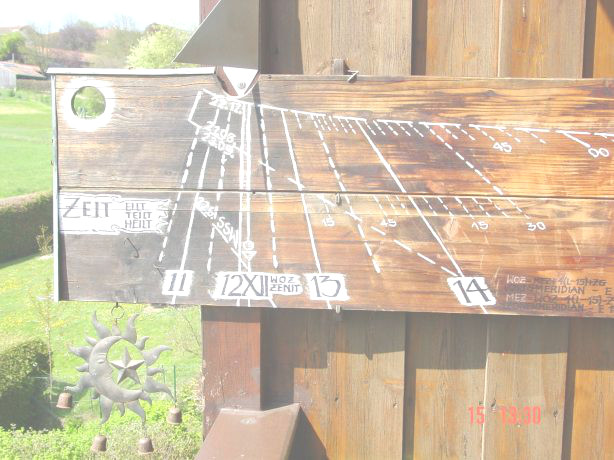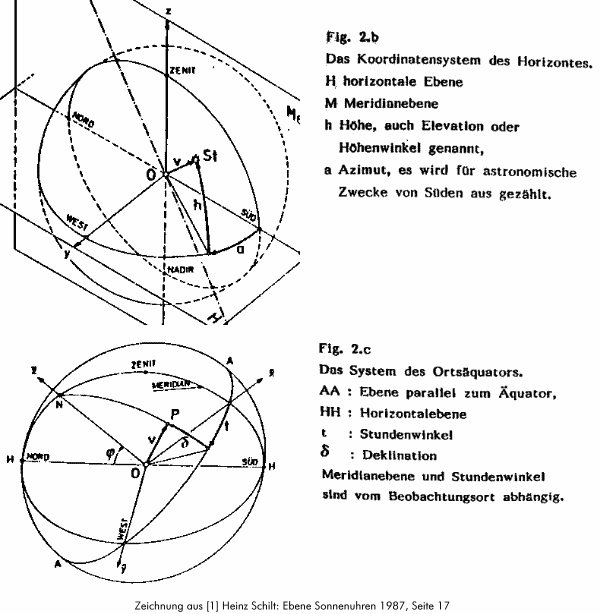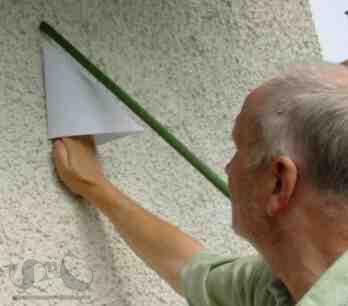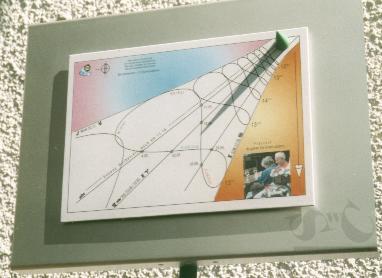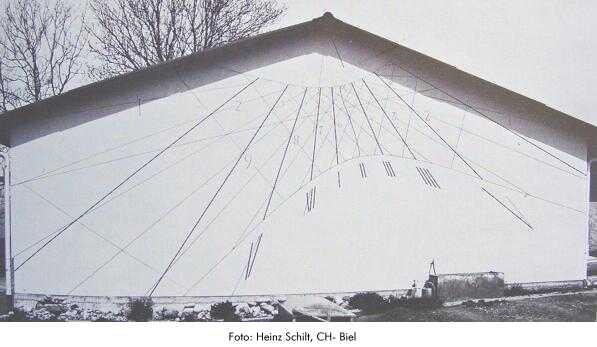 Return Return |
|||||||||
| SELF-MADE | |||||||||
| (The translation to English is maded by pc-program and by adding few corrects with my "know-how" :-) ) | |||||||||
Notes on the " Subject Sundial " Wenn man an mir nicht rückt,
Wenn man an mir nicht rückt, auf mich die Sonne freundlich blickt, dann zeig' ich jedem, der mich liest, wie Zeit und Stunde friedlich fließt. SwC
| |||||||||
| All "times" in the following explanations can be indicated without big problems on a sundial. Because the modern person quite simply compares his wristwatch to the sundial in most cases, the sundial for this case must the respective standard zone (e.g., in Central Europe CET: 15 ° E long., in California indicate the Pacific Time: 120 ° W long.) and receive a reference to the time equation. In the anglo-saxon countries the time of zone is also called Standard Time. | |||||||||
| Abbreviations
Up to establishment of the railroad which needed a standardization with the quicker cruising speed the AST had made good services. From 1893 the CET became in Germany lawfully. It is a time of zone (practically the station clock of Warsaw to Madrid), goes out from steady day division, hourly division and minute division and relation meridian to 15 ° E long. (Görlitz) of Greenwich.
In Madrid these both times show, e.g., a not low difference on account of the substantial difference of the degree of longitudes. The ET is with about plus below 5 minutes in summer of less of importance.
Some countries also belong to the CET-time zone in Africa: Algeria, Lybia, Nigeria, Angola, ... The UT (Universally Time) counts to the today's air traffic. It is the middle time in the relation meridian 0 ° (Greenwich).
One must make a distinction between ET (e.g., in January with "negative" sign). The astronomers and sundial makers count on this in her formulae since about in 1977 [H. Vilkner in 1977], and the "negative" ET [3], F. Embacher p.76, as an old definition it was used before it and today is appropriated to sundials (e.g., in January with "postive" sign) to determine the land-usual time of day (CET) in the sundial.
In the early time of the mechanical clocks it was a self-evident fact to adjust the inaccuracy of these clocks after the sun. With it the sun went properly and the mechanical clock wrong and it became valid:
Only with more precise mechanical clocks (e.g., naval chronometer in 1790) could be more exactly also calculated the ET and from 1834 the mechanical clock went properly and the sun wrong! Only in 1977 it came for the rearrangement to the new definition ET= AST (Solar Time)- MST (wheels clock)
It is to be paid attention in tables also in recent publications to the signs! The ET- diagramm too seeing on my travel sundial would have to call, actually, "negative" ET, because it has the reverse signs of the real time ET right-wise. ... if the summertime (Daylight saving time) is not indicated sometimes on the sundial, it is a simple thing for everyone that he adds this one full hour (speak: plus one)!
Time containing for the respective location after the sun. Because the earth moves irregularly around the sun, day division, hourly division and minute division are also different from day to day. However, it has the advantage that with her at XII o'clock the solar highest level is indicated and is with it more connected with nature than the CET. In Görlitz is: 12:00 o'clock CET= XII o'clock AST , if during four days in the year the equation of time is zero:
It would think, that steady day division, hourly division and minute division and refers to the individual location. It is no time of zone. | |||||||||
| The Historical
On the southern countries where one go to the sleep on the roof of the house and gets show daily the wonderful star sky does not surprise it that especially these people (Babylonians, Persians, Arabs ...) have made themselves around the progress of the astronomy deserving.
Also the today's names of the signs of the zodiac go back to them. Indeed, these signs of the zodiac of the astrologers have moved on the basis of the sun for about 2000 years around a sign of the zodiac, so that, e.g., the sign of the zodiac Aries lies today before the sign of the zodiac Fish.
Italian hours are calculated by the preceding sundown and are indicated with a point pointer. If one complements the hours to 24, one receives the hourly rest to sundown.
In Europe the period of time of prosperity of the sundial makers was this from the 16th to the 18th century in which the "compass makers" performed good craft and design.
You can see also, that several dials are explained like AST, CET, noon of some cosmopolitan cities ....
Without Theory it does not go
After I have read something in literature to mind as an amateur, got used to myself something with the professional vocabulary and have tried to understand the descriptions of the authors to the sundial construction, I had to find out that it was not always quite easy especially with the mathematicians and is if the spheric trigonometry and " shifting of the sun " and similar are mentioned. With the calculation and arrangement of the pointer it was similar.
Stonecutters and sculptors work more with drawings, practical "take a bearing of things" and with aids.
With the real calculations this is especially confused if the signs are forgotten, the angle sometimes by north, then from south is measured. One must take care for whether the author works just with the horizon, equator system or already with the spheric trigonometry.
Luckily there are various sundial programs which make easier a lot, however, not the knowledge what is hidden behind the values to be given.
My Pointer Shoe, a practical Result
My " go mushrooming " has been worthwhile! At least, nevertheless, at the end the useful result of the "pointer shoe" is created!
In his variation as a pointer"sail", it is an easy and comfortable solution especially the connection with two screws-for a wall which does not show exactly to the south or another direction (= divergent wall or declinated wall).
An enlargement or reduction of pointer shoe with correspondingly factor is possible just like that if one does not change the angles.
In the end I have decided on the so-called "mark method", because this is more flexible than the calculations of the hours with her steady numerical values.
On four days with ± 0 of the ET (April 15th, June 13th, Sept 01st, Dec 25th) indicates the sundial exactly the Central European Time (CET) and you can mark directly the hours of the wristwatch on your sundial. Also the grandpa can adjust his old pocket watch directly after the sundial.
For the remaining days in the year the correction values are to be taken into consideration by the mark according of equation of time.
What signifies, e.g., "minus" / "earlier" in the equation of time?
The earth rotates at this time fastest on the sun (2nd law of Kepler), the sundial is fast therefore and the minute value is to be subtracted from the station clock.
One can add this correction values as an information and as a design element very well as a equalization-diagram of time ("negative" time equation with my sundials as a " correction during minutes ") to a sundial.
Manufacturing, Mounting and Check
Also slight inaccuracies are not only embarrassing, but, unfortunately, no more can be corrected if one has applied the clock already on a massive house wall.
Design :
Of the sundial design it applies if one said of the wall sundials from earlier time that no clock is identical with a second one.
One has here wide possibilities of design.
With the numerals of dial something has become a tradition that one takes the Roman numerals
for the AST and the Arabian numerals for the CET.
It has also been earlier a good custom that one has straightened the number of dial to the sundial center and after the shadow of sun, thus a little diagonal. Unfortunately, this representation make a little more work for the maker and compelling in no way. With the Roman numerals is remarkable that have written the old sundial makers, e.g., IV as IIII (also on old pocket watches). I believe, it had designing intention.
[1] Heinz Schilt: Ebene Sonnenuhren, CH-Biel (im Selbstverlag), 1987
[2] Arnold Zenkert: Faszination Sonnenuhr, Frankfurt a.M. 2005
[3] Franz Embacher: Sonnenuhren bauen leicht gemacht, Köln 1984
[5] Rene Rohr: Die Sonnenuhr, München 1982
[6] Sonnenuhren-Handbuch: Deutsche Gesellschaft für Chronometrie
| |||||||||
